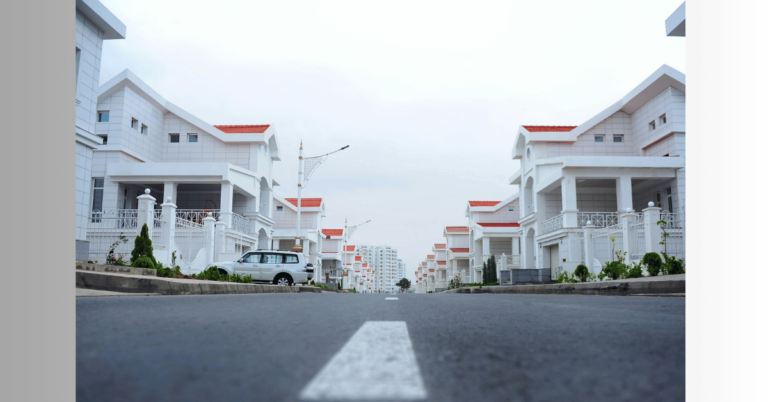Affordable housing has become a pressing issue across Europe. Rising property prices, increased urbanization, and stagnant wages have made it difficult for many people to find homes within their budget. Governments, non-profits, and private companies are working on solutions to bridge the gap. Let’s explore the current state of affordable housing in Europe, the challenges faced, and the measures being taken to tackle this crisis.
Why Is Affordable Housing a Big Issue?
Affordable housing refers to homes that are reasonably priced, allowing people to meet their basic needs without financial strain. However, the demand for such housing is outpacing supply in many European cities.
Some of the reasons include:
- Urbanization: Cities attract more people due to job opportunities.
- High Property Prices: Limited land and increasing demand drive prices up.
- Stagnant Wages: Incomes are not increasing at the same rate as housing costs.
- Population Growth: Europe’s population is steadily increasing, adding more pressure to housing markets.
These factors have created a housing shortage, particularly for low- and middle-income families.
Housing Challenges in Key European Countries
The housing crisis affects each country differently. Here is a summary of the situation in some key regions:
| Country | Challenges | Current Efforts |
|---|---|---|
| Germany | Shortage of housing in cities like Berlin, Munich, and Frankfurt. | Rent caps and investment in public housing. |
| United Kingdom | High property prices in London and other major cities. | Affordable housing targets and first-time buyer schemes. |
| France | Paris faces one of the highest rental prices in Europe. | Social housing programs and rent regulation policies. |
| Spain | Oversupply in rural areas but insufficient housing in urban centers like Madrid and Barcelona. | Renovation projects and incentives for affordable urban housing development. |
| Netherlands | Severe housing shortage in cities due to high demand and slow construction. | Increasing housing density and government subsidies for affordable projects. |
Solutions to the Housing Crisis
Addressing affordable housing requires a mix of short- and long-term solutions. Here are some of the key measures being adopted:
1. Government Policies
Governments across Europe are introducing policies to control housing costs. For example:
- Rent caps to limit how much landlords can charge.
- Subsidies for developers to build affordable homes.
- Tax incentives for people to invest in affordable housing projects.
2. Public Housing Programs
Countries like Austria and Denmark have strong public housing programs. These provide long-term affordable rentals, particularly for low-income families.
3. Innovative Construction Methods
Innovative methods such as modular homes and 3D-printed houses can reduce construction time and costs. These solutions are being piloted in countries like the Netherlands.
4. Repurposing Vacant Properties
Empty offices and abandoned buildings are being converted into housing in cities like Berlin and Paris. This approach reduces costs and addresses urban housing shortages.
5. Green Housing
Sustainable housing projects are gaining popularity. These homes are energy-efficient, reducing long-term costs for residents. For example, the EU Green Deal encourages energy-efficient renovations.
Success Stories
Vienna, Austria
Vienna is a leader in affordable housing. Over 60% of the population lives in subsidized apartments. The city invests heavily in public housing projects and controls rental costs effectively.
Copenhagen, Denmark
Copenhagen focuses on mixed-income neighborhoods. Affordable housing is integrated into regular housing developments, ensuring diversity and reducing inequality.
The Role of Technology
Technology plays a vital role in addressing the housing crisis:
- Smart Cities: Using data to plan better housing projects.
- PropTech Startups: Platforms that connect renters with affordable housing options.
- Construction Tech: Innovations like prefabrication for faster building.
Challenges Ahead
Despite efforts, there are still challenges:
- Funding Issues: Affordable housing projects often face budget constraints.
- Public Opposition: People sometimes oppose new developments due to fears of overcrowding or loss of property value.
- Lengthy Approvals: Bureaucracy slows down housing projects.
FAQs About Affordable Housing in Europe
1. What is affordable housing?
Affordable housing refers to homes that cost less than 30% of a household’s income, ensuring they can afford other essential expenses.
2. Which European countries have the best affordable housing programs?
Austria and Denmark are often praised for their successful public housing programs.
3. How are governments helping with affordable housing?
Governments implement policies like rent controls, subsidies for developers, and public housing programs to address the crisis.
4. What is the future of affordable housing in Europe?
The future looks promising with advancements in construction technology, sustainable housing initiatives, and increased government support.
5. How can individuals find affordable housing?
Look for government-subsidized housing schemes, explore shared living options, or use online platforms dedicated to affordable rentals.
Conclusion
Affordable housing remains a critical issue in Europe. While challenges persist, there are many innovative solutions and successful models to learn from. Governments, private developers, and communities need to work together to create sustainable and inclusive housing for all. Addressing this issue will not only improve quality of life but also contribute to economic stability.

